This report serves to describe the mutational landscape and properties of a given individual set, as well as rank genes and genesets according to mutational significance. MutSig v1.5 was used to generate the results found in this report.
-
Working with individual set: PRAD-TP
-
Number of patients in set: 251
The input for this pipeline is a set of individuals with the following files associated for each:
-
An annotated .maf file describing the mutations called for the respective individual, and their properties.
-
A .wig file that contains information about the coverage of the sample.
-
MAF used for this analysis:PRAD-TP.final_analysis_set.maf
-
Significantly mutated genes (q ≤ 0.1): 36
-
Mutations seen in COSMIC: 92
-
Significantly mutated genes in COSMIC territory: 7
-
Significantly mutated genesets: 26
-
Significantly mutated genesets: (excluding sig. mutated genes):0
-
Read 251 MAFs of type "Broad"
-
Total number of mutations in input MAFs: 17449
-
After removing 155 mutations outside chr1-24: 17294
-
After removing 1347 blacklisted mutations: 15947
-
After removing 277 noncoding mutations: 15670
-
Number of mutations before filtering: 15670
-
After removing 636 mutations outside gene set: 15034
-
After removing 12 mutations outside category set: 15022
Table 1. Get Full Table Table representing breakdown of mutations by type.
| type | count |
|---|---|
| Frame_Shift_Del | 579 |
| Frame_Shift_Ins | 166 |
| In_Frame_Del | 165 |
| In_Frame_Ins | 17 |
| Missense_Mutation | 9127 |
| Nonsense_Mutation | 541 |
| Nonstop_Mutation | 7 |
| Silent | 3890 |
| Splice_Site | 530 |
| Total | 15022 |
Table 2. Get Full Table A breakdown of mutation rates per category discovered for this individual set.
| category | n | N | rate | rate_per_mb | relative_rate | exp_ns_s_ratio |
|---|---|---|---|---|---|---|
| *CpG->(A/T) | 3535 | 416115424 | 8.5e-06 | 8.5 | 5.7 | 2.1 |
| *Cp(A/C/T)->(A/T) | 3000 | 3377759523 | 8.9e-07 | 0.89 | 0.59 | 2.7 |
| A->(C/G) | 1501 | 3631611686 | 4.1e-07 | 0.41 | 0.28 | 3.4 |
| flip | 1091 | 7425486633 | 1.5e-07 | 0.15 | 0.098 | 5.3 |
| indel+null | 1995 | 7425486633 | 2.7e-07 | 0.27 | 0.18 | NaN |
| double_null | 10 | 7425486633 | 1.3e-09 | 0.0013 | 0.0009 | NaN |
| Total | 11132 | 7425486633 | 1.5e-06 | 1.5 | 1 | 3.5 |
The x axis represents the samples. The y axis represents the exons, one row per exon, and they are sorted by average coverage across samples. For exons with exactly the same average coverage, they are sorted next by the %GC of the exon. (The secondary sort is especially useful for the zero-coverage exons at the bottom). If the figure is unpopulated, then full coverage is assumed (e.g. MutSig CV doesn't use WIGs and assumes full coverage).
Figure 1.

Figure 2. Patients counts and rates file used to generate this plot: PRAD-TP.patients.counts_and_rates.txt
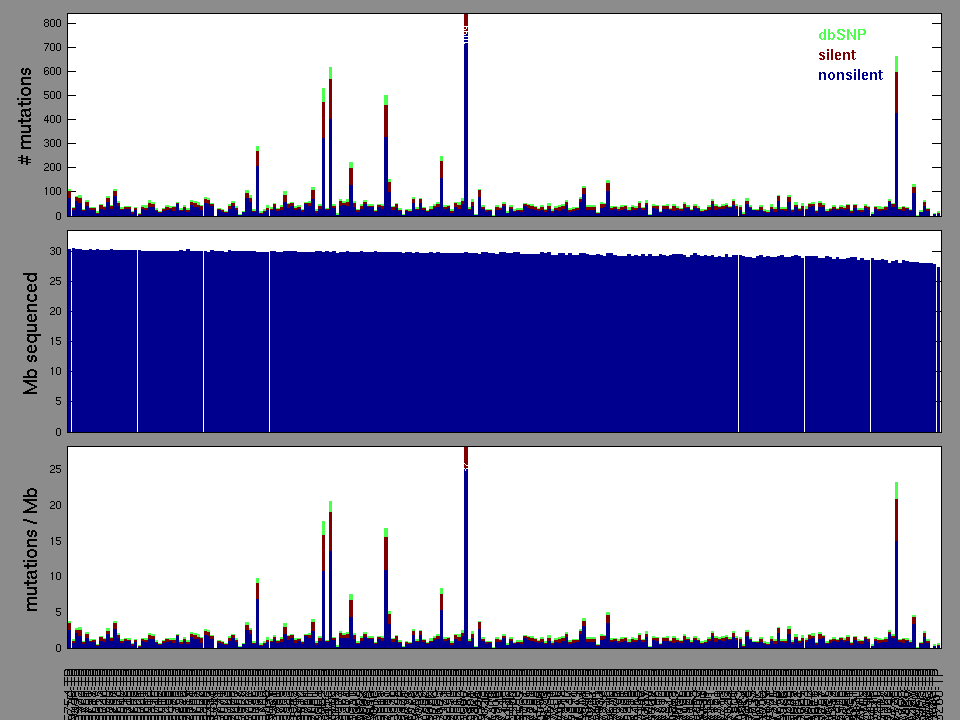
The mutation spectrum is depicted in the lego plots below in which the 96 possible mutation types are subdivided into six large blocks, color-coded to reflect the base substitution type. Each large block is further subdivided into the 16 possible pairs of 5' and 3' neighbors, as listed in the 4x4 trinucleotide context legend. The height of each block corresponds to the mutation frequency for that kind of mutation (counts of mutations normalized by the base coverage in a given bin). The shape of the spectrum is a signature for dominant mutational mechanisms in different tumor types.
Figure 3. Get High-res Image SNV Mutation rate lego plot for entire set. Each bin is normalized by base coverage for that bin. Colors represent the six SNV types on the upper right. The three-base context for each mutation is labeled in the 4x4 legend on the lower right. The fractional breakdown of SNV counts is shown in the pie chart on the upper left. If this figure is blank, not enough information was provided in the MAF to generate it.
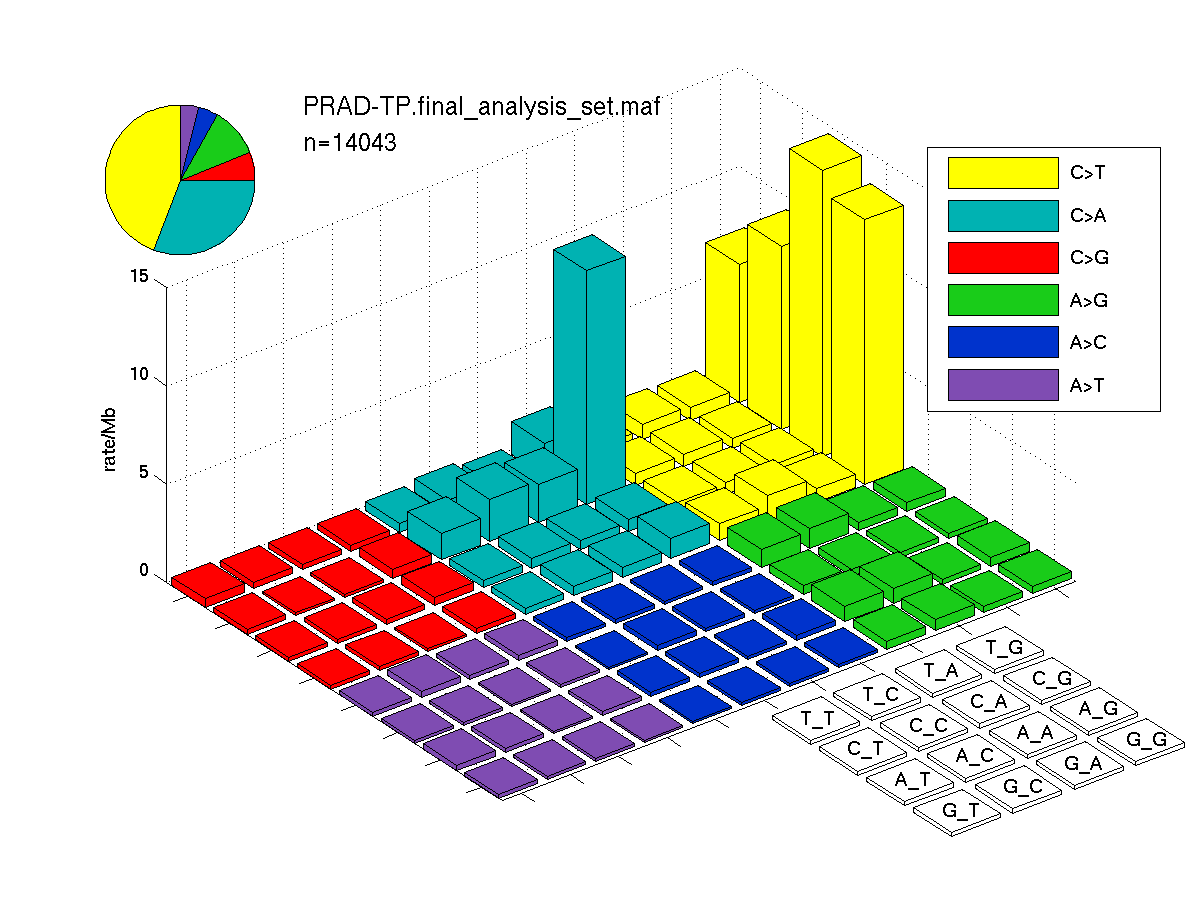
Figure 4. Get High-res Image SNV Mutation rate lego plots for 4 slices of mutation allele fraction (0<=AF<0.1, 0.1<=AF<0.25, 0.25<=AF<0.5, & 0.5<=AF) . The color code and three-base context legends are the same as the previous figure. If this figure is blank, not enough information was provided in the MAF to generate it.

Figure 5. Get High-res Image The matrix in the center of the figure represents individual mutations in patient samples, color-coded by type of mutation, for the significantly mutated genes. The rate of synonymous and non-synonymous mutations is displayed at the top of the matrix. The barplot on the left of the matrix shows the number of mutations in each gene. The percentages represent the fraction of tumors with at least one mutation in the specified gene. The barplot to the right of the matrix displays the q-values for the most significantly mutated genes. The purple boxplots below the matrix (only displayed if required columns are present in the provided MAF) represent the distributions of allelic fractions observed in each sample. The plot at the bottom represents the base substitution distribution of individual samples, using the same categories that were used to calculate significance.

Column Descriptions:
-
N = number of sequenced bases in this gene across the individual set
-
n = number of (nonsilent) mutations in this gene across the individual set
-
npat = number of patients (individuals) with at least one nonsilent mutation
-
nsite = number of unique sites having a non-silent mutation
-
nsil = number of silent mutations in this gene across the individual set
-
n1 = number of nonsilent mutations of type: *CpG->(A/T)
-
n2 = number of nonsilent mutations of type: *Cp(A/C/T)->(A/T)
-
n3 = number of nonsilent mutations of type: A->(C/G)
-
n4 = number of nonsilent mutations of type: flip
-
n5 = number of nonsilent mutations of type: indel+null
-
n6 = number of nonsilent mutations of type: double_null
-
p_ns_s = p-value for the observed nonsilent/silent ratio being elevated in this gene
-
p = p-value (overall)
-
q = q-value, False Discovery Rate (Benjamini-Hochberg procedure)
Table 3. Get Full Table A Ranked List of Significantly Mutated Genes. Number of significant genes found: 36. Number of genes displayed: 35. Click on a gene name to display its stick figure depicting the distribution of mutations and mutation types across the chosen gene (this feature may not be available for all significant genes).
| rank | gene | description | N | n | npat | nsite | nsil | n1 | n2 | n3 | n4 | n5 | n6 | p_ns_s | p | q |
|---|---|---|---|---|---|---|---|---|---|---|---|---|---|---|---|---|
| 1 | SPOP | speckle-type POZ protein | 291266 | 24 | 24 | 10 | 0 | 0 | 2 | 16 | 5 | 1 | 0 | 0.0043 | 5.1e-15 | 4.2e-11 |
| 2 | TP53 | tumor protein p53 | 310636 | 20 | 20 | 17 | 1 | 8 | 2 | 5 | 0 | 5 | 0 | 0.044 | 6.1e-15 | 4.2e-11 |
| 3 | PTEN | phosphatase and tensin homolog (mutated in multiple advanced cancers 1) | 289090 | 13 | 13 | 13 | 0 | 0 | 2 | 1 | 0 | 10 | 0 | 0.32 | 7e-15 | 4.2e-11 |
| 4 | FOXA1 | forkhead box A1 | 269759 | 11 | 11 | 9 | 2 | 1 | 0 | 4 | 2 | 3 | 1 | 0.71 | 1.4e-12 | 6.2e-09 |
| 5 | CTNNB1 | catenin (cadherin-associated protein), beta 1, 88kDa | 601492 | 9 | 9 | 7 | 0 | 0 | 2 | 5 | 2 | 0 | 0 | 0.068 | 2.2e-08 | 0.000078 |
| 6 | PIK3CA | phosphoinositide-3-kinase, catalytic, alpha polypeptide | 820334 | 9 | 8 | 9 | 1 | 2 | 2 | 3 | 2 | 0 | 0 | 0.32 | 5.4e-07 | 0.0016 |
| 7 | TMEM216 | transmembrane protein 216 | 80630 | 4 | 4 | 1 | 0 | 0 | 0 | 0 | 0 | 4 | 0 | 0.38 | 1.5e-06 | 0.0038 |
| 8 | LRRIQ3 | leucine-rich repeats and IQ motif containing 3 | 452715 | 6 | 6 | 6 | 0 | 1 | 2 | 2 | 0 | 1 | 0 | 0.24 | 3.3e-06 | 0.0075 |
| 9 | ATM | ataxia telangiectasia mutated | 2339347 | 12 | 12 | 12 | 0 | 0 | 5 | 2 | 4 | 1 | 0 | 0.1 | 5.5e-06 | 0.011 |
| 10 | NKX3-1 | NK3 homeobox 1 | 138283 | 4 | 4 | 4 | 0 | 0 | 0 | 3 | 0 | 1 | 0 | 0.55 | 7.7e-06 | 0.014 |
| 11 | RYBP | RING1 and YY1 binding protein | 164700 | 4 | 4 | 4 | 0 | 0 | 1 | 2 | 0 | 1 | 0 | 0.37 | 8.6e-06 | 0.014 |
| 12 | BRAF | v-raf murine sarcoma viral oncogene homolog B1 | 559308 | 6 | 6 | 5 | 0 | 0 | 1 | 2 | 2 | 1 | 0 | 0.29 | 0.000012 | 0.018 |
| 13 | OR4D5 | olfactory receptor, family 4, subfamily D, member 5 | 241178 | 4 | 4 | 4 | 0 | 3 | 1 | 0 | 0 | 0 | 0 | 0.22 | 0.000016 | 0.022 |
| 14 | SLC10A2 | solute carrier family 10 (sodium/bile acid cotransporter family), member 2 | 267554 | 5 | 5 | 5 | 0 | 1 | 3 | 0 | 0 | 1 | 0 | 0.16 | 0.000019 | 0.024 |
| 15 | OR5AS1 | olfactory receptor, family 5, subfamily AS, member 1 | 244425 | 4 | 4 | 4 | 0 | 2 | 1 | 0 | 1 | 0 | 0 | 0.3 | 3e-05 | 0.033 |
| 16 | CLEC1A | C-type lectin domain family 1, member A | 215787 | 4 | 4 | 4 | 0 | 1 | 0 | 1 | 2 | 0 | 0 | 0.41 | 3e-05 | 0.033 |
| 17 | NBPF10 | neuroblastoma breakpoint family, member 10 | 778131 | 7 | 7 | 6 | 0 | 1 | 2 | 3 | 1 | 0 | 0 | 0.16 | 0.000031 | 0.033 |
| 18 | ZNF208 | zinc finger protein 208 | 890859 | 6 | 6 | 5 | 0 | 0 | 2 | 3 | 1 | 0 | 0 | 0.25 | 0.000039 | 0.039 |
| 19 | HIST1H2BG | histone cluster 1, H2bg | 96635 | 3 | 3 | 3 | 0 | 0 | 0 | 0 | 1 | 2 | 0 | 0.82 | 0.000043 | 0.041 |
| 20 | IDH1 | isocitrate dehydrogenase 1 (NADP+), soluble | 317204 | 4 | 4 | 2 | 0 | 3 | 0 | 0 | 1 | 0 | 0 | 0.34 | 0.000052 | 0.047 |
| 21 | OR2M3 | olfactory receptor, family 2, subfamily M, member 3 | 236391 | 4 | 4 | 4 | 0 | 2 | 1 | 1 | 0 | 0 | 0 | 0.32 | 0.000069 | 0.059 |
| 22 | ZMYM3 | zinc finger, MYM-type 3 | 788350 | 8 | 7 | 8 | 0 | 0 | 1 | 1 | 1 | 5 | 0 | 0.18 | 0.000078 | 0.06 |
| 23 | KCNB2 | potassium voltage-gated channel, Shab-related subfamily, member 2 | 688620 | 7 | 7 | 7 | 0 | 5 | 0 | 1 | 1 | 0 | 0 | 0.069 | 0.000078 | 0.06 |
| 24 | STAT3 | signal transducer and activator of transcription 3 (acute-phase response factor) | 595046 | 6 | 6 | 6 | 1 | 0 | 2 | 2 | 1 | 1 | 0 | 0.5 | 0.000079 | 0.06 |
| 25 | PBX4 | pre-B-cell leukemia homeobox 4 | 238582 | 4 | 4 | 4 | 0 | 2 | 0 | 0 | 0 | 2 | 0 | 0.45 | 0.000089 | 0.062 |
| 26 | EPB41L3 | erythrocyte membrane protein band 4.1-like 3 | 838019 | 8 | 7 | 8 | 1 | 4 | 3 | 1 | 0 | 0 | 0 | 0.16 | 9e-05 | 0.062 |
| 27 | CDKN1B | cyclin-dependent kinase inhibitor 1B (p27, Kip1) | 151716 | 4 | 4 | 4 | 0 | 0 | 0 | 0 | 0 | 4 | 0 | 1 | 0.000092 | 0.062 |
| 28 | LCE2D | late cornified envelope 2D | 84587 | 3 | 3 | 3 | 0 | 1 | 1 | 0 | 0 | 1 | 0 | 0.61 | 0.00011 | 0.067 |
| 29 | RP1 | retinitis pigmentosa 1 (autosomal dominant) | 1623379 | 8 | 8 | 8 | 0 | 0 | 4 | 1 | 2 | 1 | 0 | 0.2 | 0.00011 | 0.067 |
| 30 | CASP1 | caspase 1, apoptosis-related cysteine peptidase (interleukin 1, beta, convertase) | 312890 | 4 | 4 | 4 | 0 | 1 | 1 | 1 | 1 | 0 | 0 | 0.35 | 0.00013 | 0.076 |
| 31 | GAS2L2 | growth arrest-specific 2 like 2 | 660600 | 7 | 7 | 7 | 0 | 4 | 3 | 0 | 0 | 0 | 0 | 0.072 | 0.00014 | 0.08 |
| 32 | ETV3 | ets variant gene 3 | 110772 | 3 | 3 | 3 | 0 | 0 | 0 | 1 | 0 | 2 | 0 | 0.73 | 0.00016 | 0.09 |
| 33 | ACBD7 | acyl-Coenzyme A binding domain containing 7 | 70448 | 2 | 2 | 2 | 0 | 0 | 1 | 1 | 0 | 0 | 0 | 0.61 | 0.00016 | 0.09 |
| 34 | FBN1 | fibrillin 1 | 2223821 | 11 | 11 | 11 | 1 | 4 | 4 | 2 | 1 | 0 | 0 | 0.17 | 0.00019 | 0.098 |
| 35 | GABRG1 | gamma-aminobutyric acid (GABA) A receptor, gamma 1 | 341380 | 4 | 4 | 4 | 0 | 2 | 2 | 0 | 0 | 0 | 0 | 0.3 | 0.00019 | 0.098 |
Figure S1. This figure depicts the distribution of mutations and mutation types across the SPOP significant gene.

Figure S2. This figure depicts the distribution of mutations and mutation types across the TP53 significant gene.

Figure S3. This figure depicts the distribution of mutations and mutation types across the PTEN significant gene.

Figure S4. This figure depicts the distribution of mutations and mutation types across the FOXA1 significant gene.
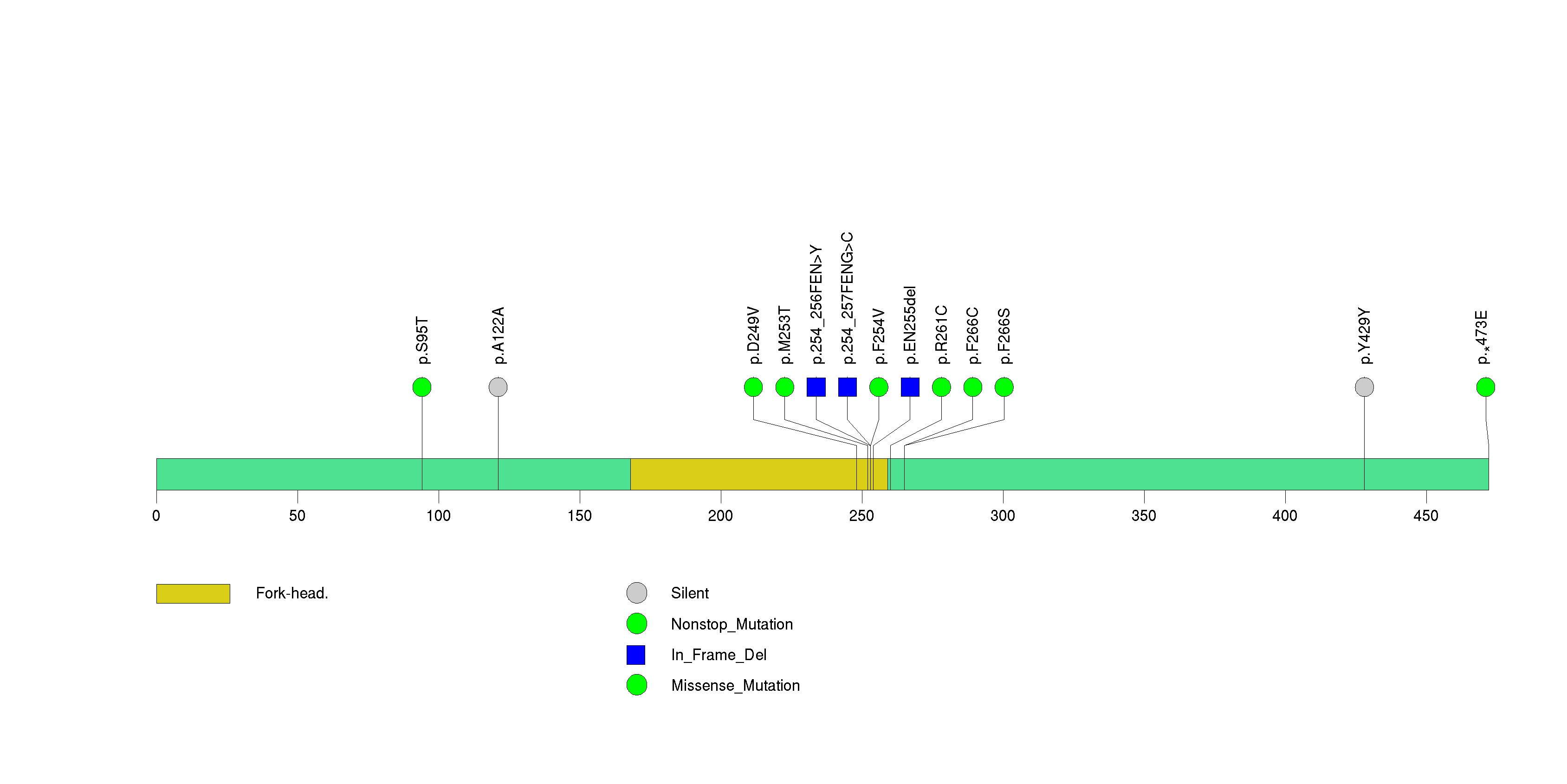
Figure S5. This figure depicts the distribution of mutations and mutation types across the CTNNB1 significant gene.

Figure S6. This figure depicts the distribution of mutations and mutation types across the PIK3CA significant gene.

Figure S7. This figure depicts the distribution of mutations and mutation types across the TMEM216 significant gene.
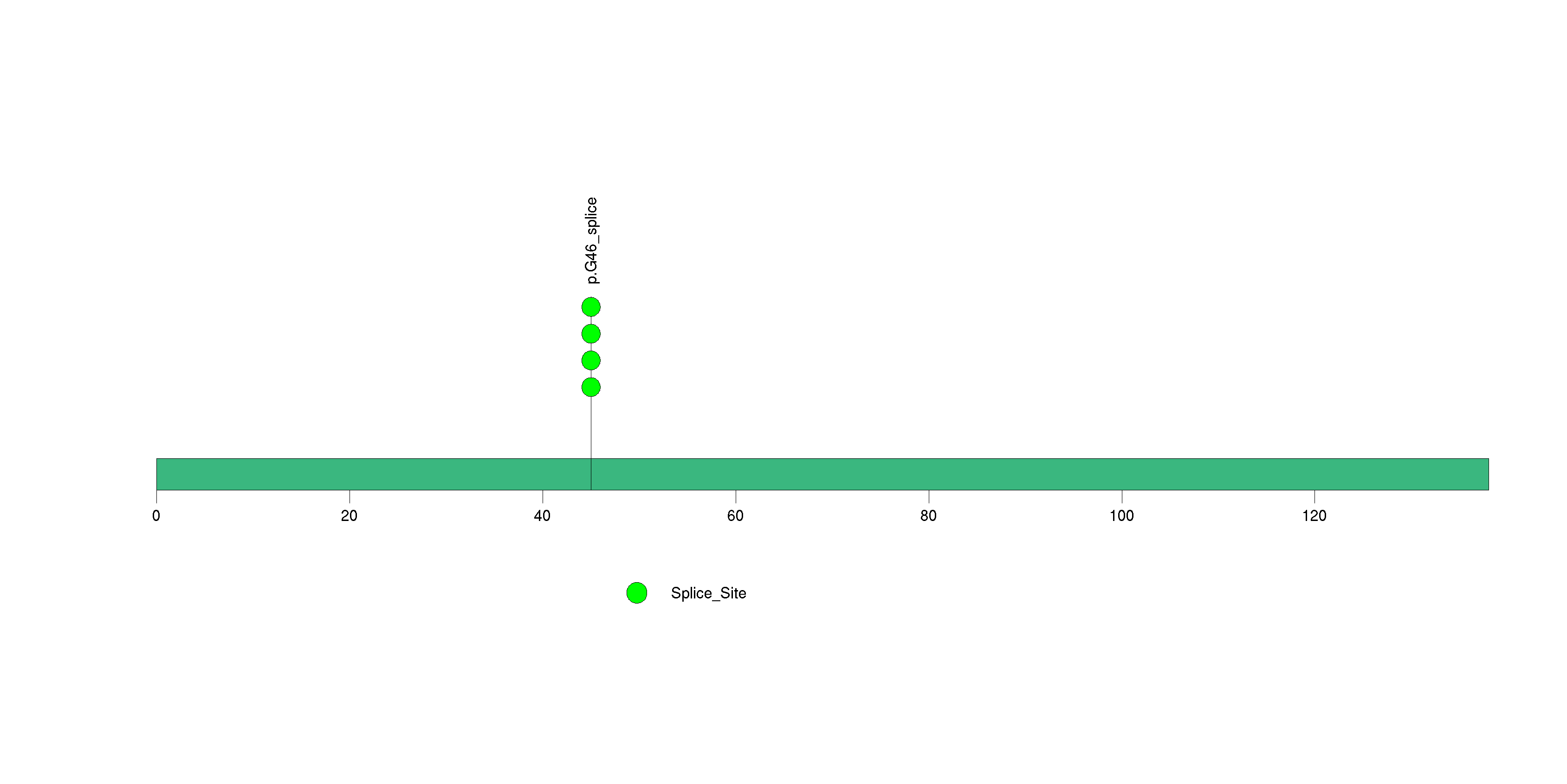
Figure S8. This figure depicts the distribution of mutations and mutation types across the LRRIQ3 significant gene.

Figure S9. This figure depicts the distribution of mutations and mutation types across the ATM significant gene.
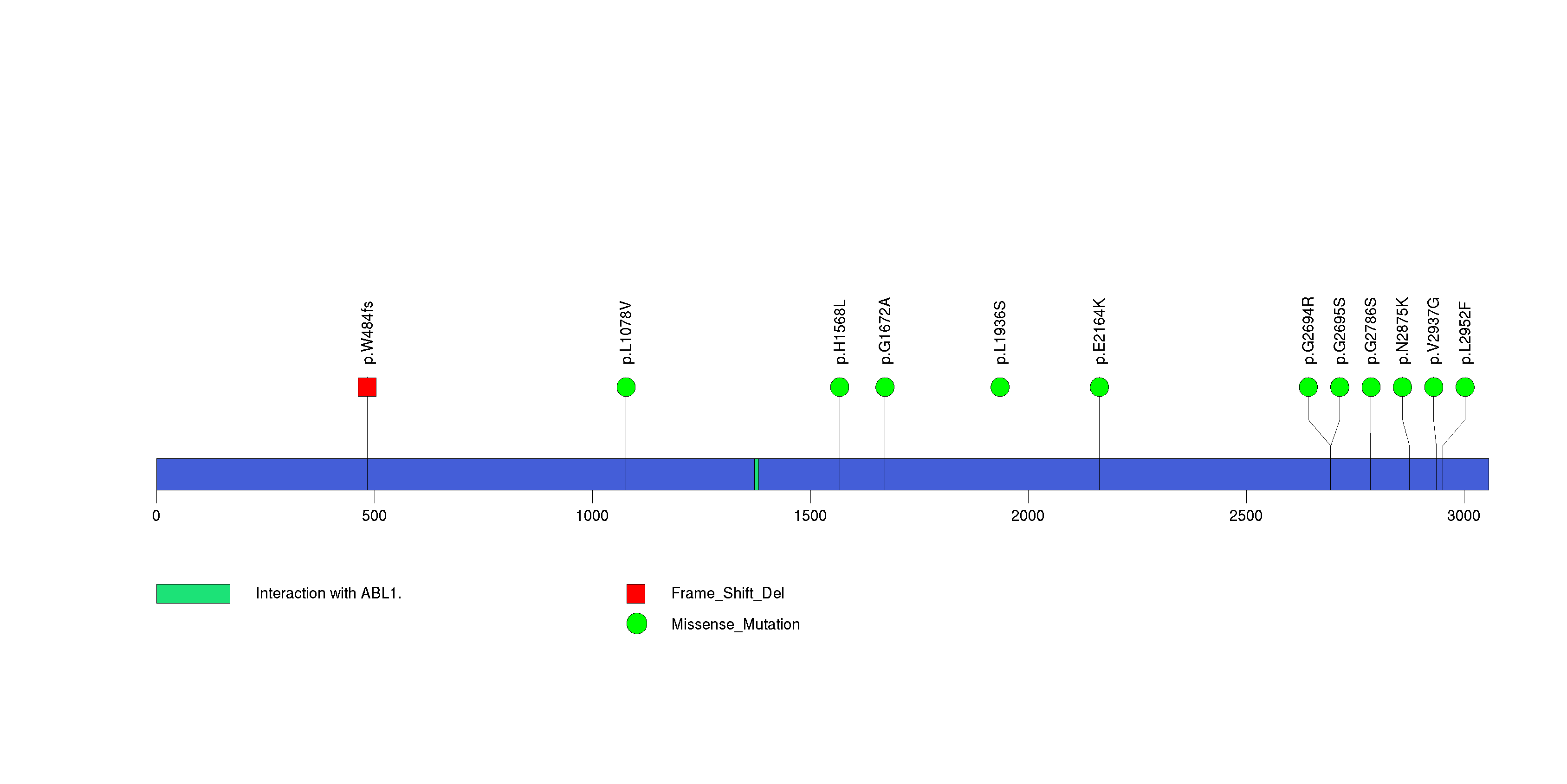
Figure S10. This figure depicts the distribution of mutations and mutation types across the NKX3-1 significant gene.
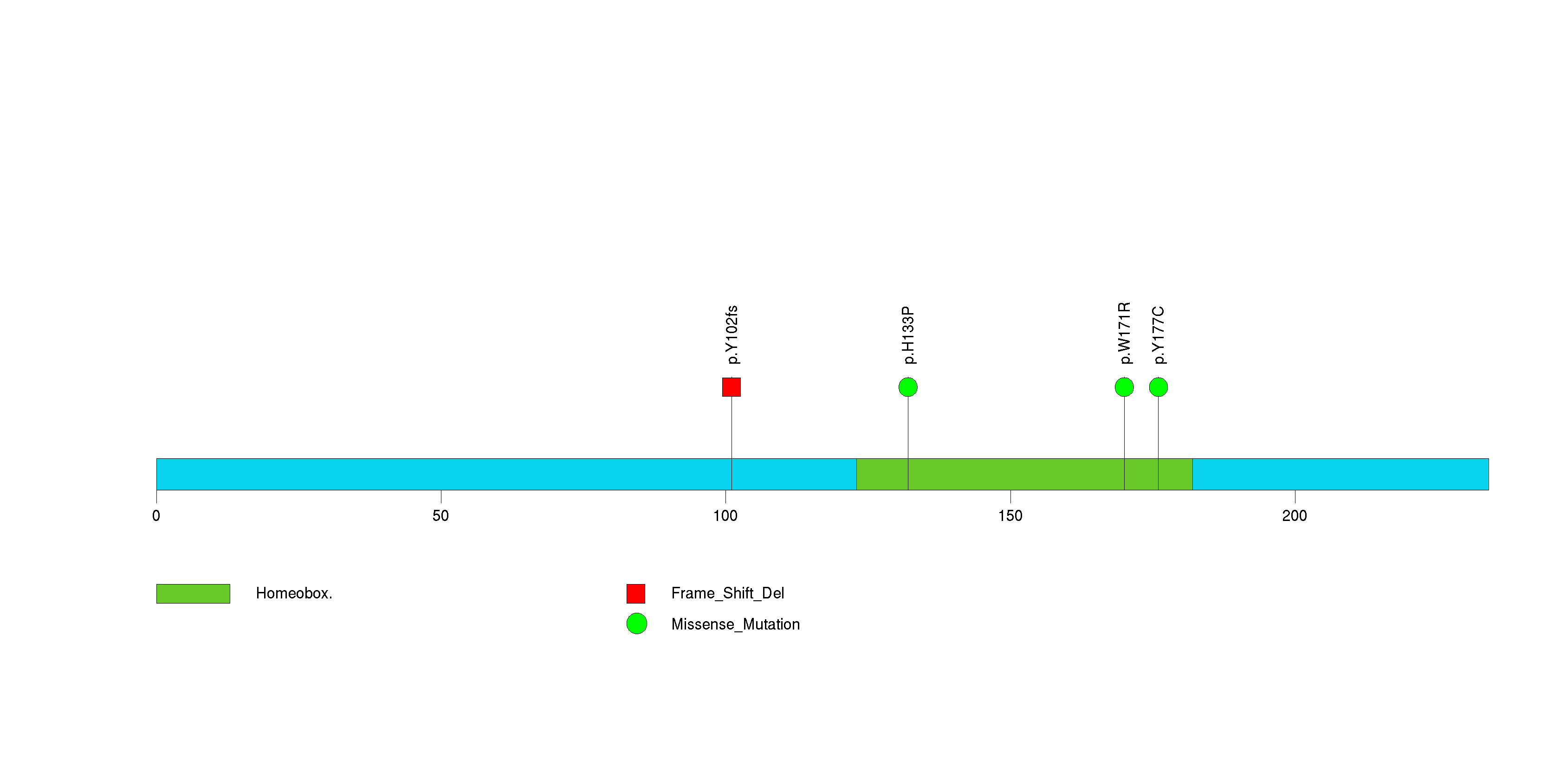
Figure S11. This figure depicts the distribution of mutations and mutation types across the RYBP significant gene.
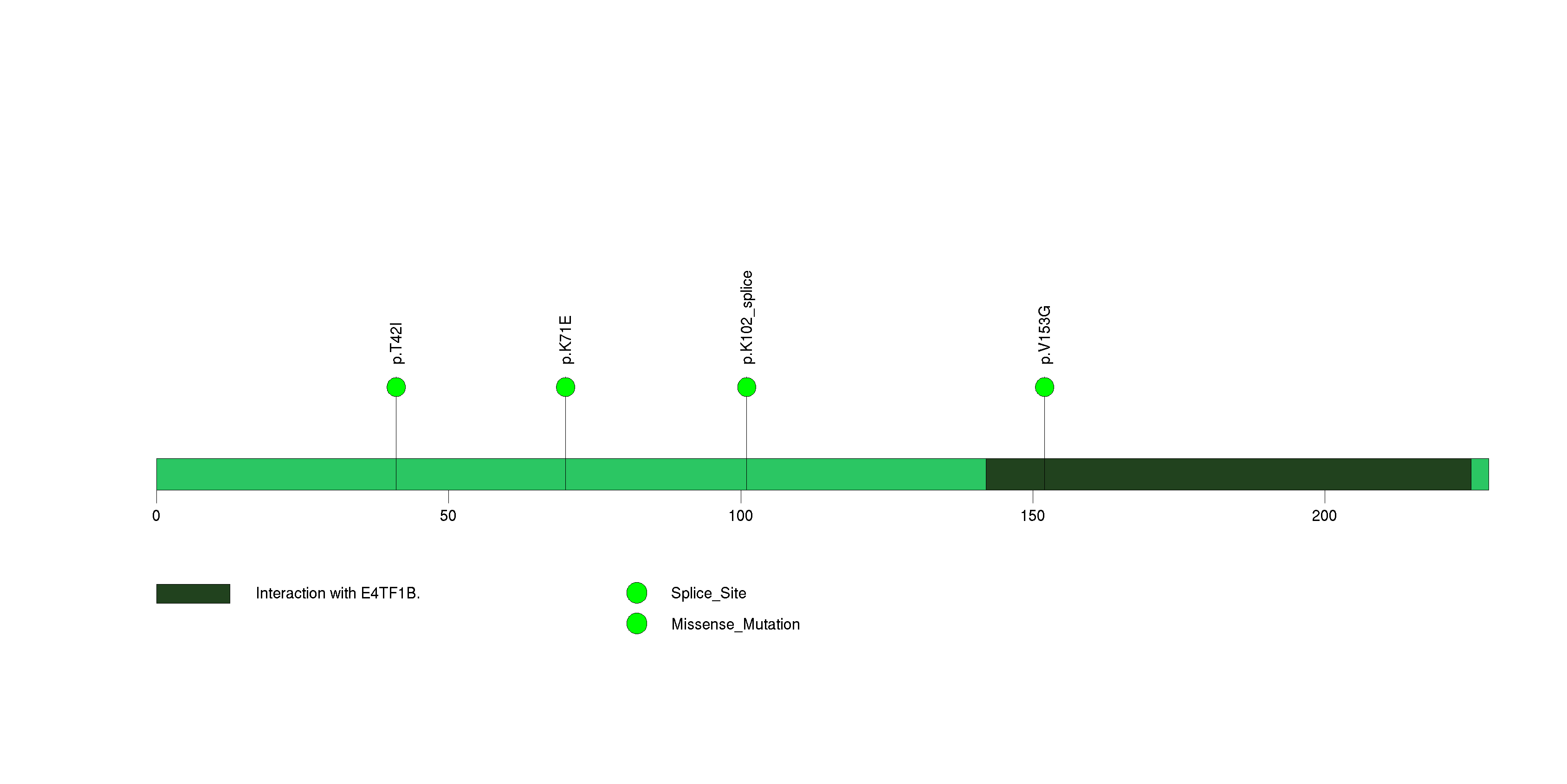
Figure S12. This figure depicts the distribution of mutations and mutation types across the BRAF significant gene.
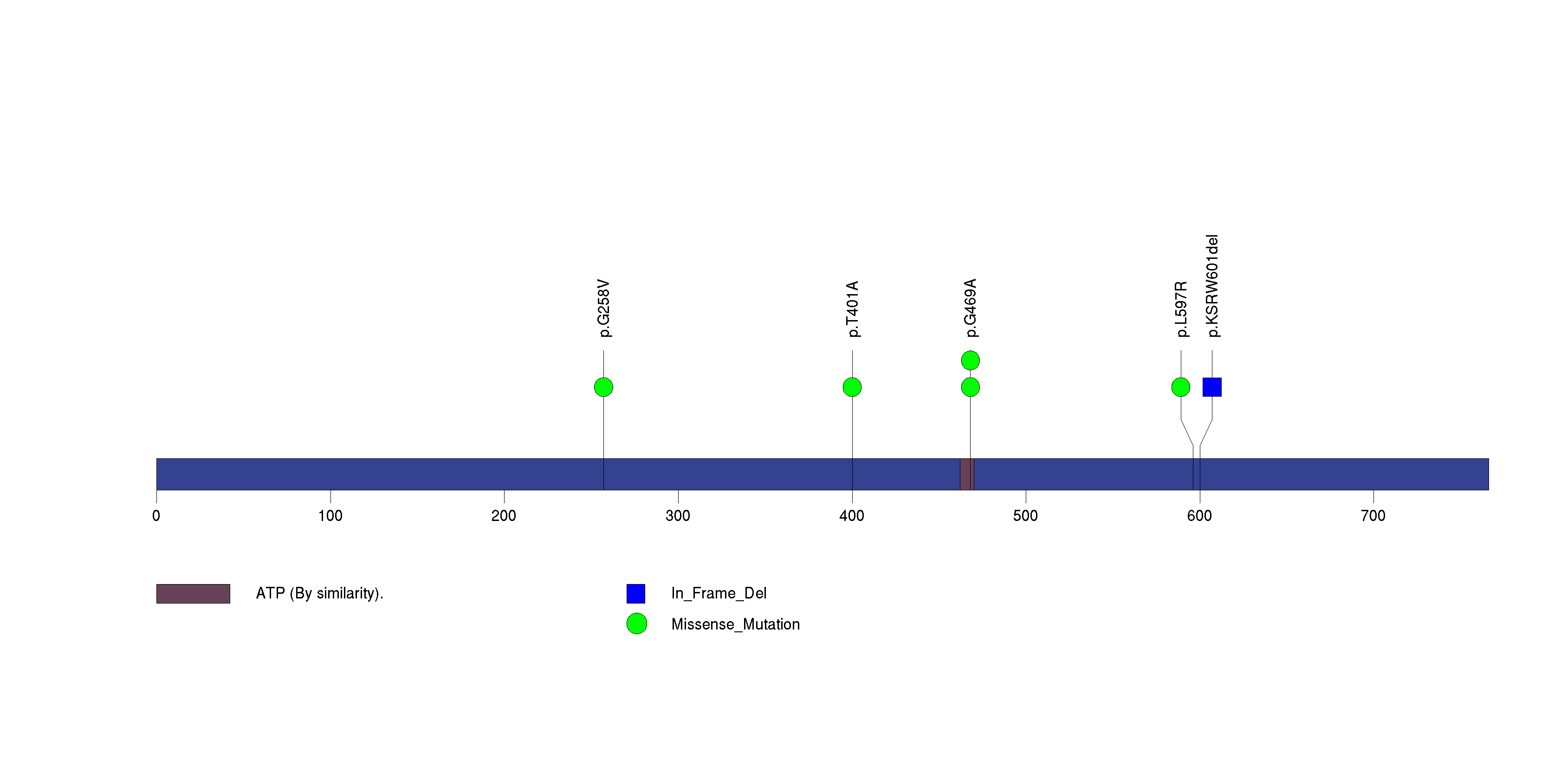
Figure S13. This figure depicts the distribution of mutations and mutation types across the OR4D5 significant gene.
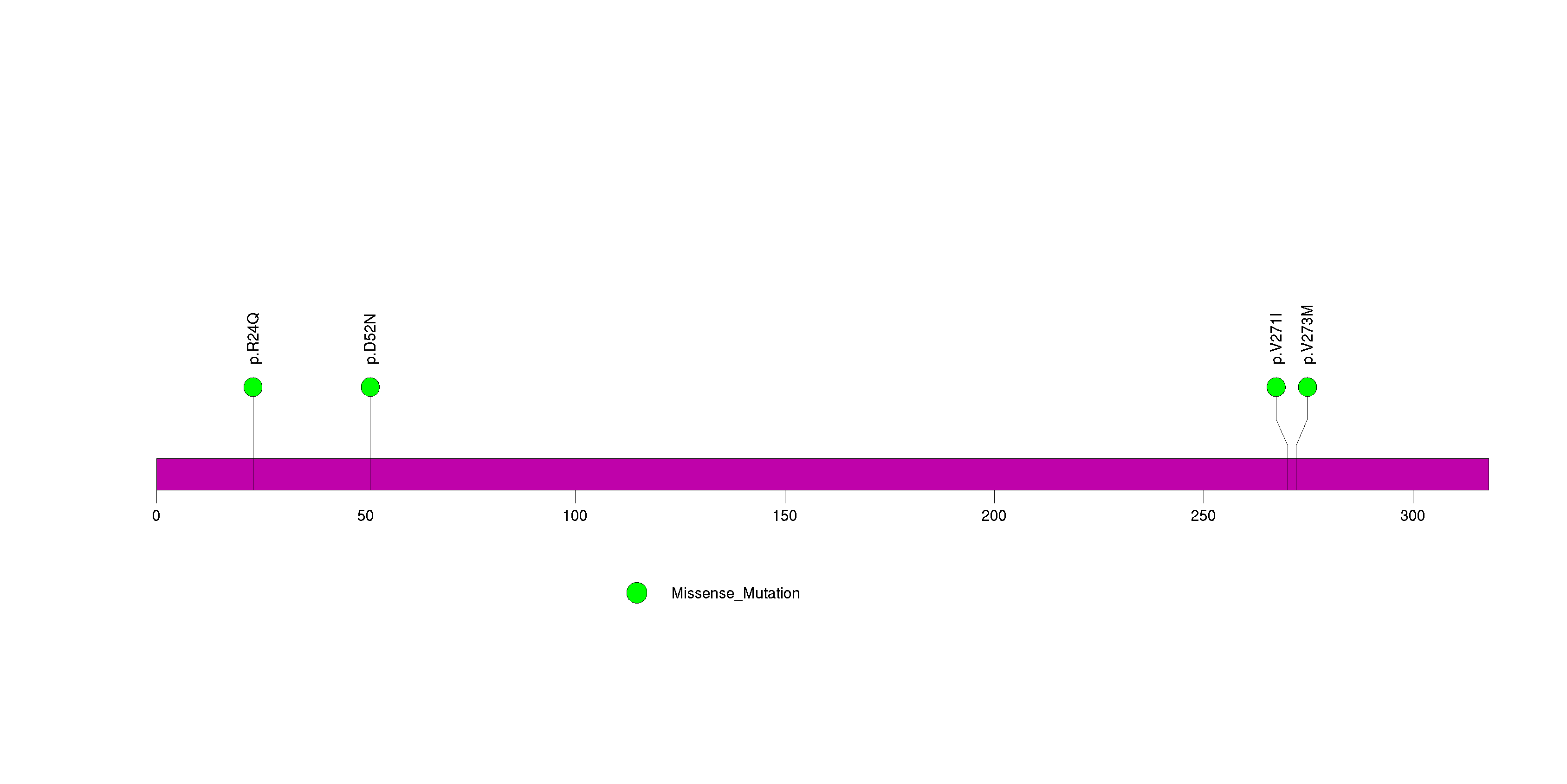
Figure S14. This figure depicts the distribution of mutations and mutation types across the SLC10A2 significant gene.

Figure S15. This figure depicts the distribution of mutations and mutation types across the OR5AS1 significant gene.

Figure S16. This figure depicts the distribution of mutations and mutation types across the CLEC1A significant gene.

Figure S17. This figure depicts the distribution of mutations and mutation types across the HIST1H2BG significant gene.

Figure S18. This figure depicts the distribution of mutations and mutation types across the IDH1 significant gene.

Figure S19. This figure depicts the distribution of mutations and mutation types across the OR2M3 significant gene.

Figure S20. This figure depicts the distribution of mutations and mutation types across the ZMYM3 significant gene.
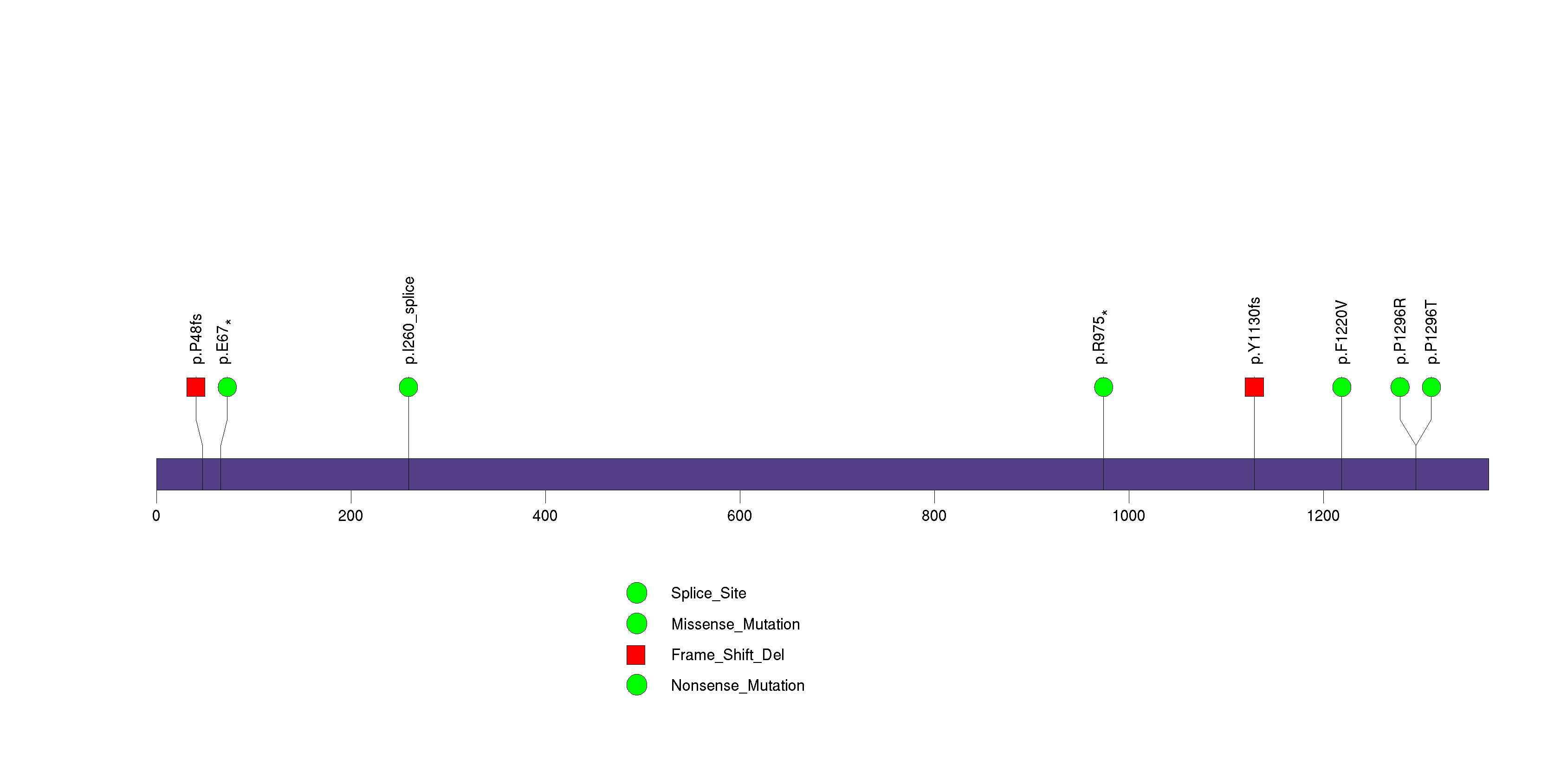
Figure S21. This figure depicts the distribution of mutations and mutation types across the KCNB2 significant gene.
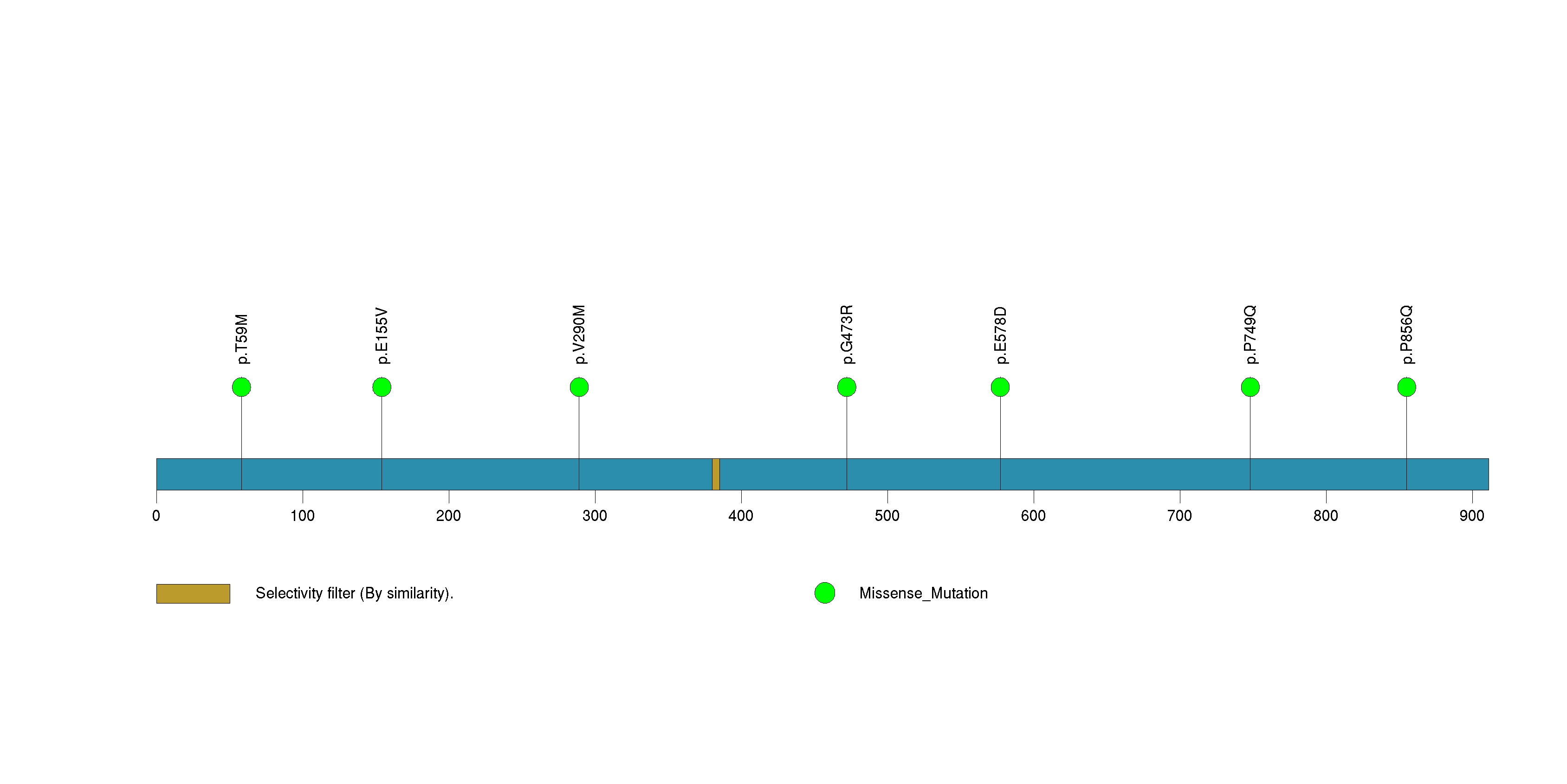
Figure S22. This figure depicts the distribution of mutations and mutation types across the STAT3 significant gene.

Figure S23. This figure depicts the distribution of mutations and mutation types across the PBX4 significant gene.

Figure S24. This figure depicts the distribution of mutations and mutation types across the EPB41L3 significant gene.

Figure S25. This figure depicts the distribution of mutations and mutation types across the CDKN1B significant gene.
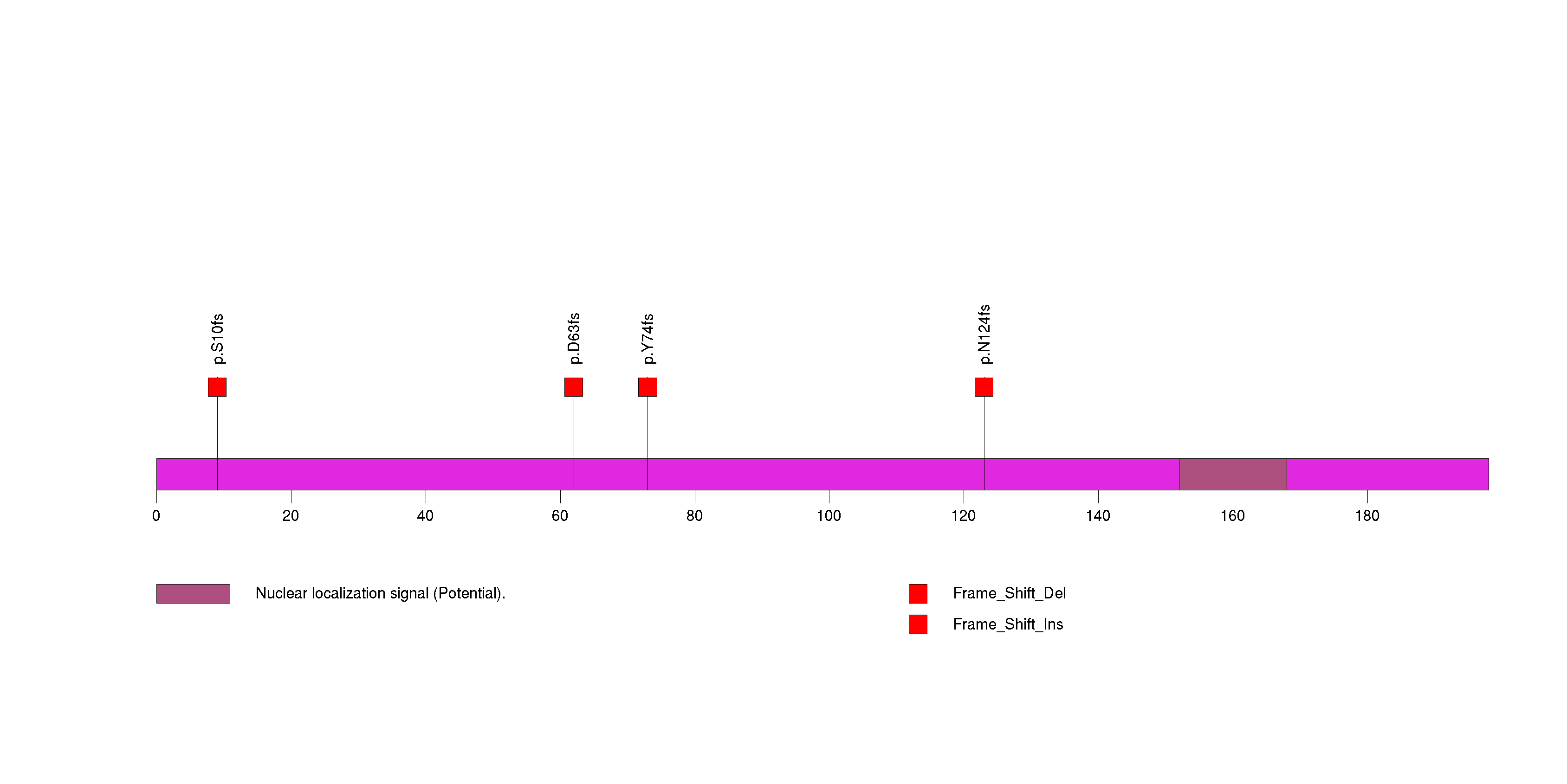
Figure S26. This figure depicts the distribution of mutations and mutation types across the LCE2D significant gene.
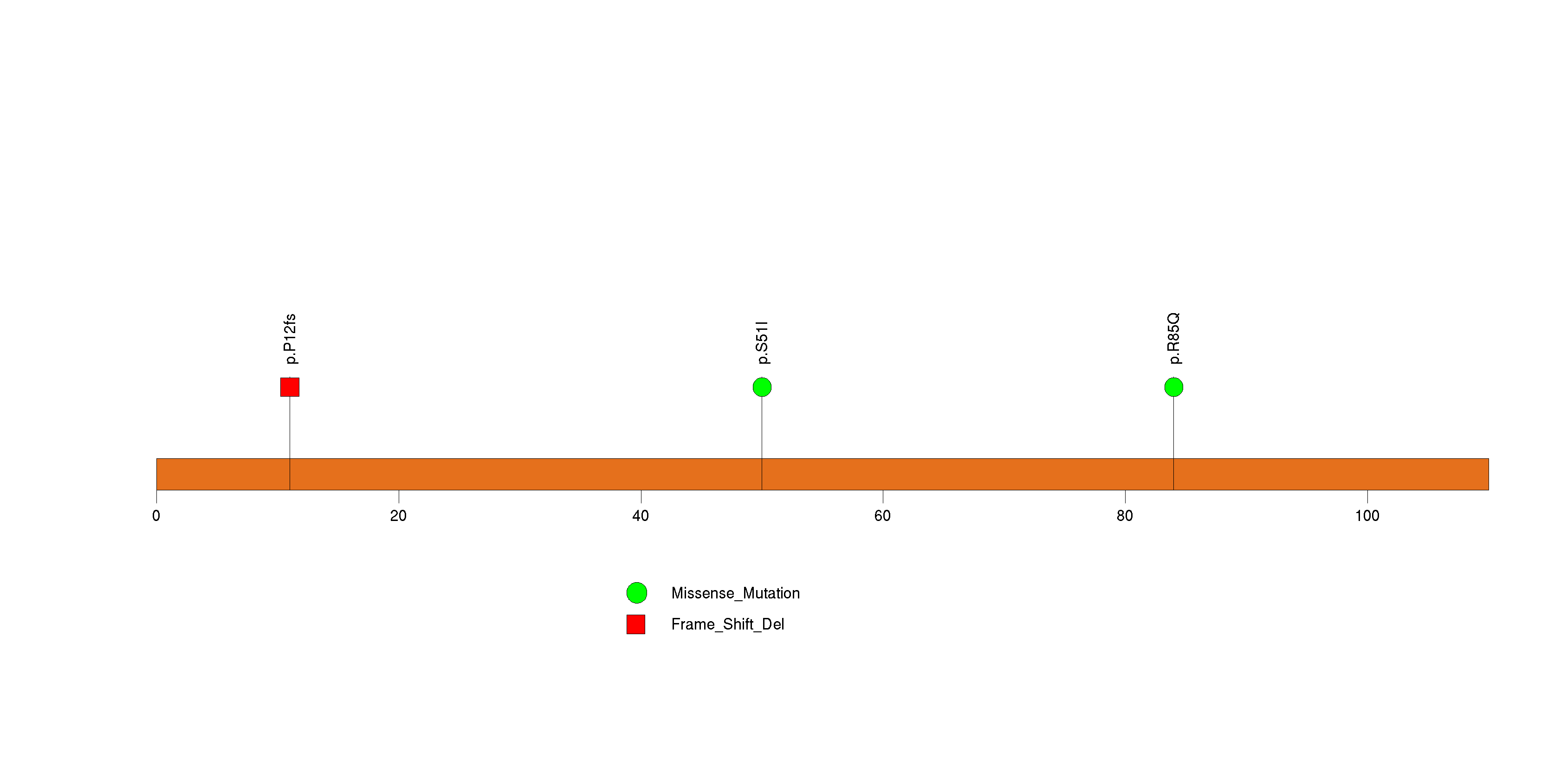
Figure S27. This figure depicts the distribution of mutations and mutation types across the RP1 significant gene.

Figure S28. This figure depicts the distribution of mutations and mutation types across the GAS2L2 significant gene.
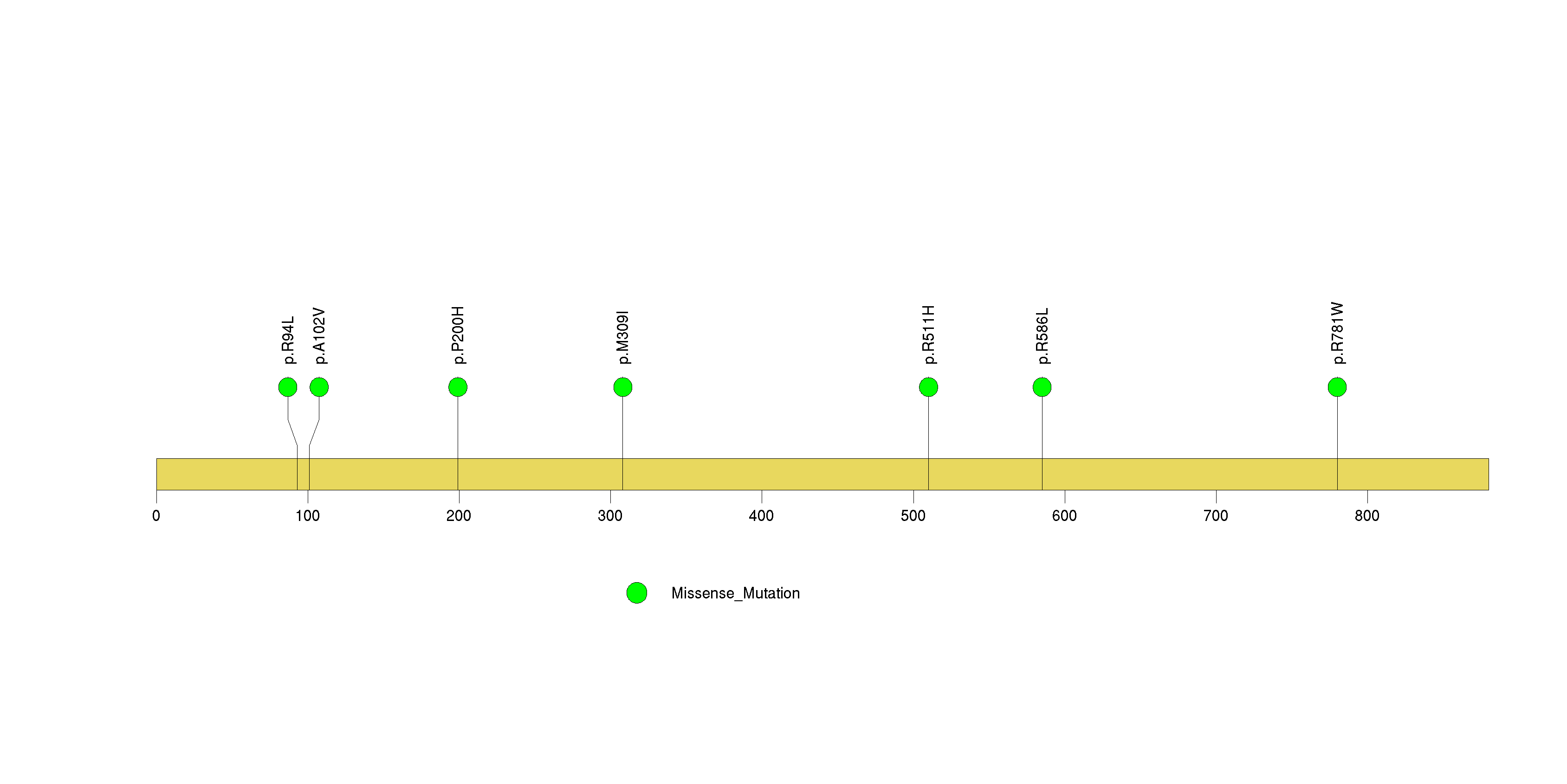
Figure S29. This figure depicts the distribution of mutations and mutation types across the ETV3 significant gene.
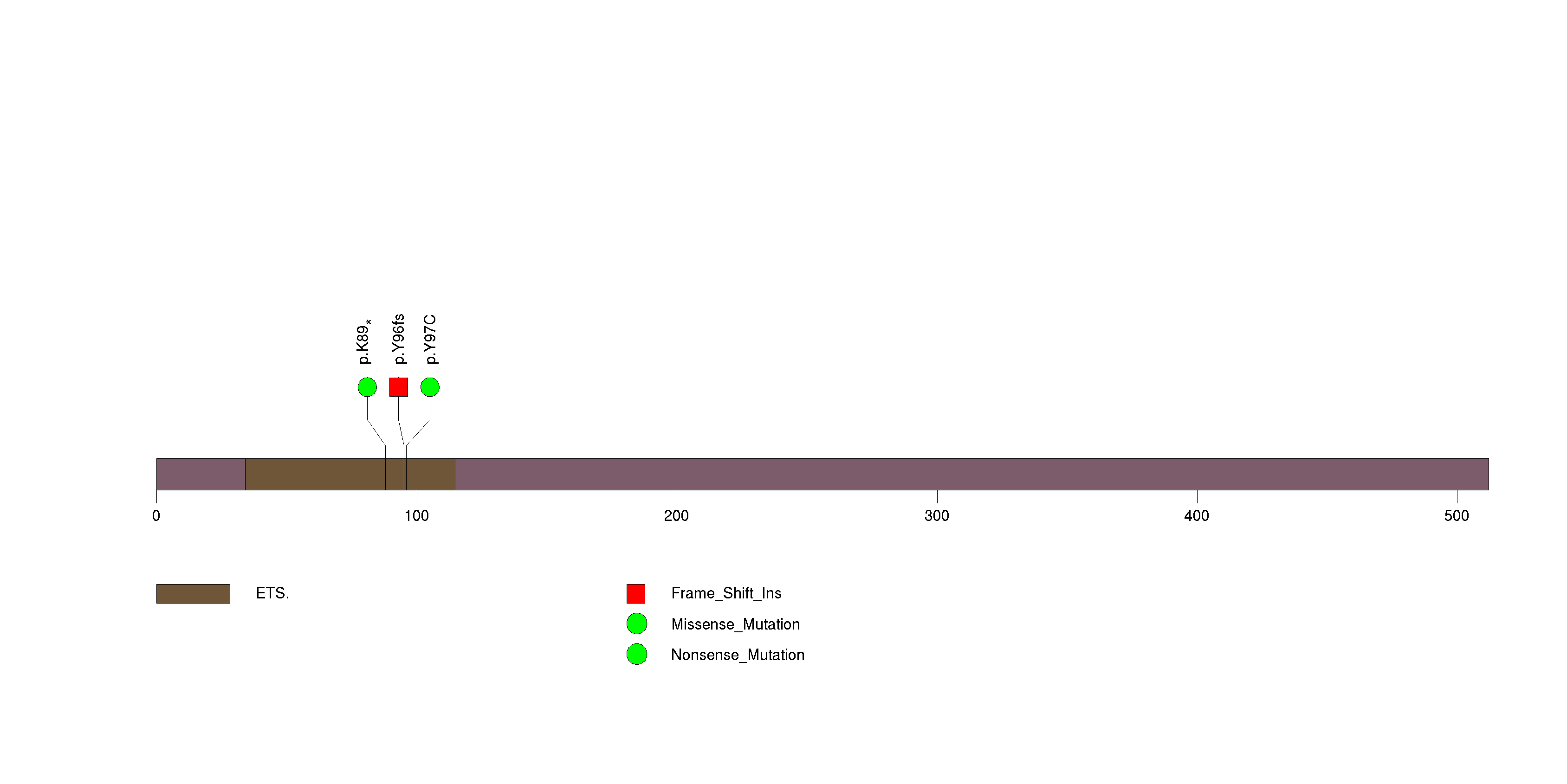
Figure S30. This figure depicts the distribution of mutations and mutation types across the ACBD7 significant gene.
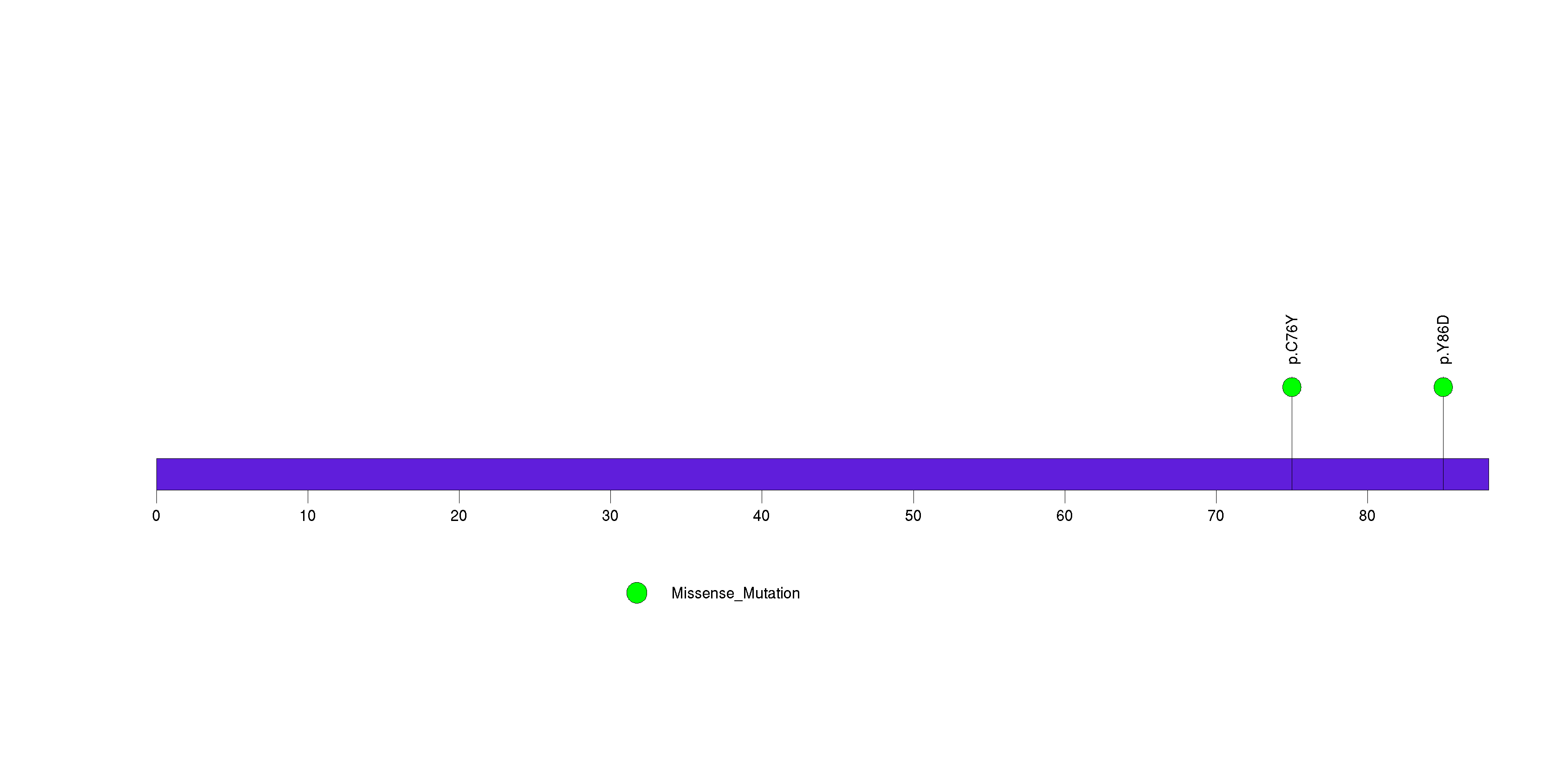
Figure S31. This figure depicts the distribution of mutations and mutation types across the FBN1 significant gene.
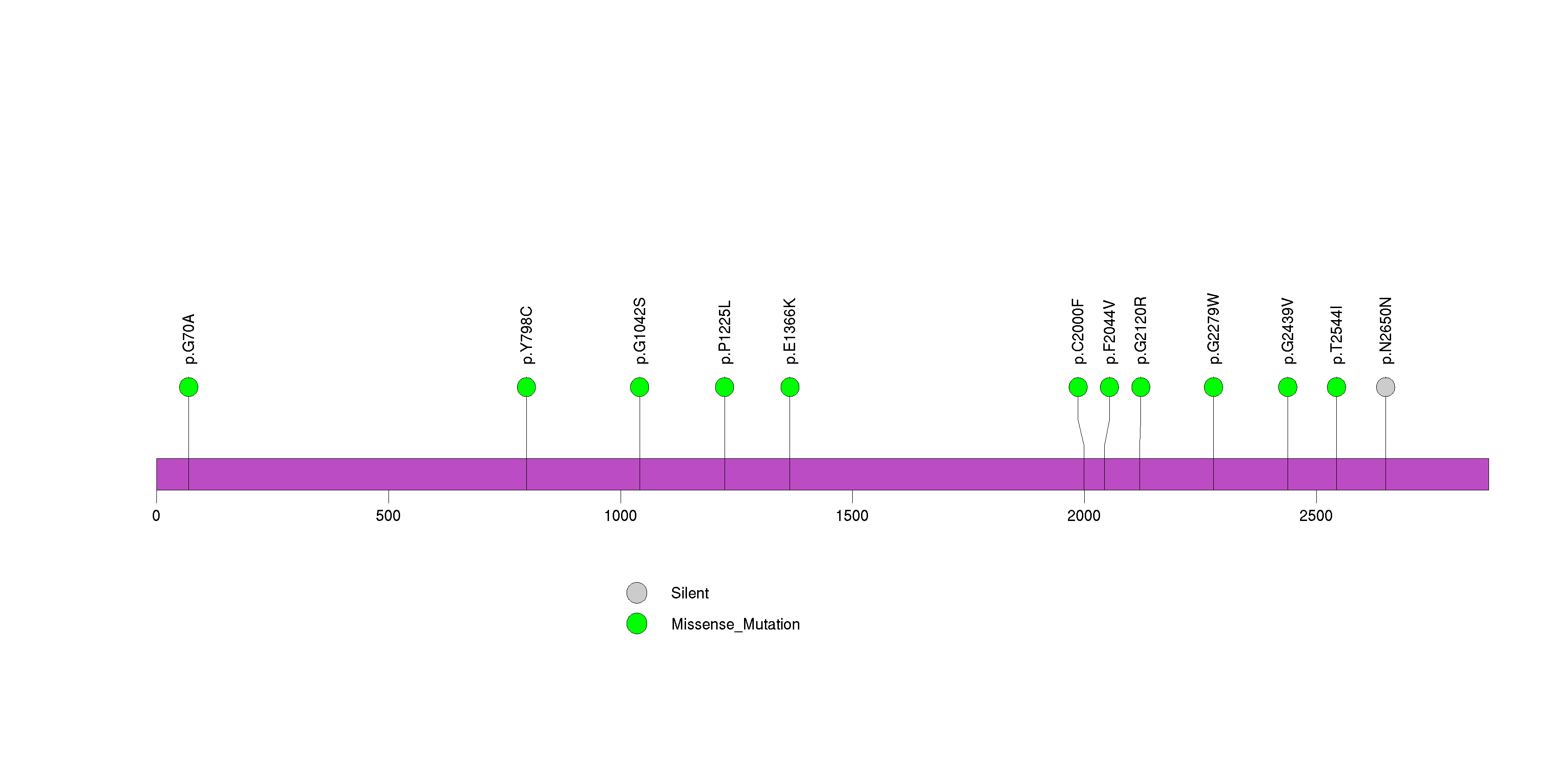
In this analysis, COSMIC is used as a filter to increase power by restricting the territory of each gene. Cosmic version: v48.
Table 4. Get Full Table Significantly mutated genes (COSMIC territory only). To access the database please go to: COSMIC. Number of significant genes found: 7. Number of genes displayed: 10
| rank | gene | description | n | cos | n_cos | N_cos | cos_ev | p | q |
|---|---|---|---|---|---|---|---|---|---|
| 1 | CTNNB1 | catenin (cadherin-associated protein), beta 1, 88kDa | 9 | 138 | 8 | 34638 | 3282 | 3e-13 | 8e-10 |
| 2 | PIK3CA | phosphoinositide-3-kinase, catalytic, alpha polypeptide | 9 | 220 | 9 | 55220 | 1953 | 4.6e-13 | 8e-10 |
| 3 | IDH1 | isocitrate dehydrogenase 1 (NADP+), soluble | 4 | 5 | 4 | 1255 | 5968 | 5.3e-13 | 8e-10 |
| 4 | TP53 | tumor protein p53 | 20 | 356 | 20 | 89356 | 6877 | 7.1e-13 | 8e-10 |
| 5 | PTEN | phosphatase and tensin homolog (mutated in multiple advanced cancers 1) | 13 | 767 | 13 | 192517 | 188 | 1.3e-12 | 1.2e-09 |
| 6 | BRAF | v-raf murine sarcoma viral oncogene homolog B1 | 6 | 89 | 4 | 22339 | 210 | 5.1e-08 | 0.000038 |
| 7 | SMAD4 | SMAD family member 4 | 4 | 159 | 4 | 39909 | 19 | 5.1e-07 | 0.00033 |
| 8 | ATAD1 | ATPase family, AAA domain containing 1 | 1 | 1 | 1 | 251 | 1 | 0.00038 | 0.13 |
| 9 | BRE | brain and reproductive organ-expressed (TNFRSF1A modulator) | 2 | 1 | 1 | 251 | 1 | 0.00038 | 0.13 |
| 10 | KCNH1 | potassium voltage-gated channel, subfamily H (eag-related), member 1 | 1 | 1 | 1 | 251 | 1 | 0.00038 | 0.13 |
Note:
n - number of (nonsilent) mutations in this gene across the individual set.
cos = number of unique mutated sites in this gene in COSMIC
n_cos = overlap between n and cos.
N_cos = number of individuals times cos.
cos_ev = total evidence: number of reports in COSMIC for mutations seen in this gene.
p = p-value for seeing the observed amount of overlap in this gene)
q = q-value, False Discovery Rate (Benjamini-Hochberg procedure)
Table 5. Get Full Table A Ranked List of Significantly Mutated Genesets. (Source: MSigDB GSEA Cannonical Pathway Set).Number of significant genesets found: 26. Number of genesets displayed: 10
| rank | geneset | description | genes | N_genes | mut_tally | N | n | npat | nsite | nsil | n1 | n2 | n3 | n4 | n5 | n6 | p_ns_s | p | q |
|---|---|---|---|---|---|---|---|---|---|---|---|---|---|---|---|---|---|---|---|
| 1 | TERTPATHWAY | hTERC, the RNA subunit of telomerase, and hTERT, the catalytic protein subunit, are required for telomerase activity and are overexpressed in many cancers. | HDAC1, MAX, MYC, SP1, SP3, TP53, WT1, ZNF42 | 7 | SP1(1), SP3(2), TP53(20) | 2651631 | 23 | 22 | 20 | 1 | 8 | 3 | 5 | 1 | 6 | 0 | 0.012 | 6.5e-12 | 4e-09 |
| 2 | P53HYPOXIAPATHWAY | Hypoxia induces p53 accumulation and consequent apoptosis with p53-mediated cell cycle arrest, which is present under conditions of DNA damage. | ABCB1, AKT1, ATM, BAX, CDKN1A, CPB2, CSNK1A1, CSNK1D, FHL2, GADD45A, HIC1, HIF1A, HSPA1A, HSPCA, IGFBP3, MAPK8, MDM2, NFKBIB, NQO1, TP53 | 19 | ABCB1(4), AKT1(1), ATM(12), CDKN1A(2), CPB2(1), HIC1(1), HSPA1A(1), MDM2(1), NQO1(1), TP53(20) | 7808812 | 44 | 38 | 41 | 2 | 15 | 9 | 8 | 4 | 8 | 0 | 0.00094 | 1.4e-11 | 4e-09 |
| 3 | SA_G1_AND_S_PHASES | Cdk2, 4, and 6 bind cyclin D in G1, while cdk2/cyclin E promotes the G1/S transition. | ARF1, ARF3, CCND1, CDK2, CDK4, CDKN1A, CDKN1B, CDKN2A, CFL1, E2F1, E2F2, MDM2, NXT1, PRB1, TP53 | 15 | CDK4(1), CDKN1A(2), CDKN1B(4), CDKN2A(1), CFL1(1), MDM2(1), PRB1(1), TP53(20) | 3197612 | 31 | 29 | 28 | 3 | 11 | 3 | 5 | 0 | 12 | 0 | 0.063 | 2e-11 | 4e-09 |
| 4 | PLK3PATHWAY | Active Plk3 phosphorylates CDC25c, blocking the G2/M transition, and phosphorylates p53 to induce apoptosis. | ATM, ATR, CDC25C, CHEK1, CHEK2, CNK, TP53, YWHAH | 7 | ATM(12), CHEK2(1), TP53(20) | 5977834 | 33 | 30 | 30 | 2 | 8 | 8 | 7 | 4 | 6 | 0 | 0.022 | 4.1e-11 | 6.4e-09 |
| 5 | P53PATHWAY | p53 induces cell cycle arrest or apoptosis under conditions of DNA damage. | APAF1, ATM, BAX, BCL2, CCND1, CCNE1, CDK2, CDK4, CDKN1A, E2F1, GADD45A, MDM2, PCNA, RB1, TIMP3, TP53 | 16 | APAF1(1), ATM(12), CDK4(1), CDKN1A(2), MDM2(1), RB1(3), TP53(20) | 6785968 | 40 | 34 | 37 | 3 | 11 | 9 | 8 | 4 | 7 | 1 | 0.0075 | 3.5e-10 | 4.4e-08 |
| 6 | CHEMICALPATHWAY | DNA damage promotes Bid cleavage, which stimulates mitochondrial cytochrome c release and consequent caspase activation, resulting in apoptosis. | ADPRT, AKT1, APAF1, ATM, BAD, BAX, BCL2, BCL2L1, BID, CASP3, CASP6, CASP7, CASP9, CYCS, EIF2S1, PRKCA, PRKCB1, PTK2, PXN, STAT1, TLN1, TP53 | 20 | AKT1(1), APAF1(1), ATM(12), BAD(1), CASP7(1), PRKCA(1), PTK2(2), PXN(1), STAT1(1), TLN1(2), TP53(20) | 10294761 | 43 | 40 | 40 | 1 | 10 | 13 | 8 | 5 | 7 | 0 | 0.00016 | 8.4e-10 | 8.7e-08 |
| 7 | RBPATHWAY | The ATM protein kinase recognizes DNA damage and blocks cell cycle progression by phosphorylating chk1 and p53, which normally inhibits Rb to allow G1/S transitions. | ATM, CDC2, CDC25A, CDC25B, CDC25C, CDK2, CDK4, CHEK1, MYT1, RB1, TP53, WEE1, YWHAH | 12 | ATM(12), CDC25A(1), CDC25B(1), CDK4(1), MYT1(1), RB1(3), TP53(20) | 6574080 | 39 | 35 | 36 | 4 | 11 | 8 | 8 | 5 | 6 | 1 | 0.026 | 9.9e-10 | 8.8e-08 |
| 8 | ARFPATHWAY | Cyclin-dependent kinase inhibitor 2A is a tumor suppressor that induces G1 arrest and can activate the p53 pathway, leading to G2/M arrest. | ABL1, CDKN2A, E2F1, MDM2, MYC, PIK3CA, PIK3R1, POLR1A, POLR1B, POLR1C, POLR1D, RAC1, RB1, TBX2, TP53, TWIST1 | 16 | ABL1(3), CDKN2A(1), MDM2(1), PIK3CA(9), PIK3R1(2), POLR1A(4), POLR1B(1), POLR1C(2), RAC1(1), RB1(3), TP53(20) | 7626178 | 47 | 37 | 44 | 3 | 14 | 9 | 11 | 4 | 8 | 1 | 0.00086 | 2.2e-09 | 1.7e-07 |
| 9 | RNAPATHWAY | dsRNA-activated protein kinase phosphorylates elF2a, which generally inhibits translation, and activates NF-kB to provoke inflammation. | CHUK, DNAJC3, EIF2S1, EIF2S2, MAP3K14, NFKB1, NFKBIA, PRKR, RELA, TP53 | 9 | NFKB1(2), RELA(1), TP53(20) | 3678521 | 23 | 22 | 20 | 1 | 8 | 5 | 5 | 0 | 5 | 0 | 0.016 | 4e-09 | 2.7e-07 |
| 10 | PTENPATHWAY | PTEN suppresses AKT-induced cell proliferation and antagonizes the action of PI3K. | AKT1, BCAR1, CDKN1B, FOXO3A, GRB2, ILK, ITGB1, MAPK1, MAPK3, PDK2, PDPK1, PIK3CA, PIK3R1, PTEN, PTK2, SHC1, SOS1, TNFSF6 | 16 | AKT1(1), BCAR1(1), CDKN1B(4), MAPK1(1), PDPK1(1), PIK3CA(9), PIK3R1(2), PTEN(13), PTK2(2), SHC1(2), SOS1(1) | 7236178 | 37 | 33 | 37 | 3 | 8 | 8 | 4 | 2 | 15 | 0 | 0.05 | 4.9e-08 | 3e-06 |
Table 6. Get Full Table A Ranked List of Significantly Mutated Genesets (Excluding Significantly Mutated Genes). Number of significant genesets found: 0. Number of genesets displayed: 10
| rank | geneset | description | genes | N_genes | mut_tally | N | n | npat | nsite | nsil | n1 | n2 | n3 | n4 | n5 | n6 | p_ns_s | p | q |
|---|---|---|---|---|---|---|---|---|---|---|---|---|---|---|---|---|---|---|---|
| 1 | LONGEVITYPATHWAY | Caloric restriction in animals often increases lifespan, which may occur via decreased IGF receptor expression and consequent expression of stress-resistance proteins. | AKT1, CAT, FOXO3A, GH1, GHR, HRAS, IGF1, IGF1R, PIK3CA, PIK3R1, SHC1, SOD1, SOD2, SOD3 | 12 | AKT1(1), CAT(2), GHR(2), HRAS(2), IGF1R(2), PIK3R1(2), SHC1(2), SOD2(1), SOD3(1) | 4184639 | 15 | 15 | 15 | 1 | 5 | 5 | 3 | 0 | 2 | 0 | 0.07 | 0.0044 | 1 |
| 2 | TERCPATHWAY | hTERC, the RNA subunit of telomerase, and hTERT, the catalytic protein subunit, are required for telomerase activity and are overexpressed in many cancers. | NFYA, NFYB, NFYC, RB1, SP1, SP3 | 6 | NFYA(1), NFYC(2), RB1(3), SP1(1), SP3(2) | 2482692 | 9 | 8 | 9 | 1 | 1 | 3 | 1 | 1 | 2 | 1 | 0.22 | 0.0063 | 1 |
| 3 | HSA00670_ONE_CARBON_POOL_BY_FOLATE | Genes involved in one carbon pool by folate | ALDH1L1, AMT, ATIC, DHFR, FTCD, GART, MTFMT, MTHFD1, MTHFD1L, MTHFD2, MTHFR, MTHFS, MTR, SHMT1, SHMT2, TYMS | 16 | ALDH1L1(3), AMT(1), ATIC(3), DHFR(1), FTCD(1), GART(1), MTHFD1(1), MTHFD1L(1), MTHFR(2), SHMT1(3), SHMT2(1) | 7105204 | 18 | 17 | 18 | 2 | 4 | 6 | 0 | 2 | 6 | 0 | 0.098 | 0.022 | 1 |
| 4 | ONE_CARBON_POOL_BY_FOLATE | ALDH1L1, AMT, ATIC, ATP6V0C, SHMT1, DHFR, GART, MTHFD1, MTHFD1L, MTHFD2, MTHFR, MTHFS, MTR, SHMT1, SHMT2, TYMS | 15 | ALDH1L1(3), AMT(1), ATIC(3), DHFR(1), GART(1), MTHFD1(1), MTHFD1L(1), MTHFR(2), SHMT1(3), SHMT2(1) | 6699692 | 17 | 16 | 17 | 2 | 4 | 6 | 0 | 2 | 5 | 0 | 0.12 | 0.03 | 1 | |
| 5 | TRKAPATHWAY | Nerve growth factor (NGF) promotes neuronal survival and proliferation by binding its receptor TrkA, which activates PI3K/AKT, Ras, and the MAP kinase pathway. | AKT1, DPM2, GRB2, HRAS, KLK2, NGFB, NTRK1, PIK3CA, PIK3R1, PLCG1, PRKCA, PRKCB1, SHC1, SOS1 | 11 | AKT1(1), HRAS(2), KLK2(1), NTRK1(3), PIK3R1(2), PLCG1(1), PRKCA(1), SHC1(2), SOS1(1) | 5013584 | 14 | 13 | 14 | 1 | 6 | 5 | 1 | 1 | 1 | 0 | 0.073 | 0.039 | 1 |
| 6 | ERK5PATHWAY | Signaling between a tissue and its innervating axon stimulates retrograde transport via Trk receptors, which activate Erk5, which induces transcription of anti-apoptotic factors. | AKT1, CREB1, GRB2, HRAS, MAPK1, MAPK3, MAPK7, MEF2A, MEF2B, MEF2C, MEF2D, NTRK1, PIK3CA, PIK3R1, PLCG1, RPS6KA1, SHC1 | 16 | AKT1(1), HRAS(2), MAPK1(1), MEF2C(2), MEF2D(2), NTRK1(3), PIK3R1(2), PLCG1(1), RPS6KA1(1), SHC1(2) | 6302690 | 17 | 17 | 17 | 1 | 10 | 5 | 2 | 0 | 0 | 0 | 0.019 | 0.042 | 1 |
| 7 | HSA00472_D_ARGININE_AND_D_ORNITHINE_METABOLISM | Genes involved in D-arginine and D-ornithine metabolism | DAO | 1 | DAO(2) | 271587 | 2 | 2 | 2 | 1 | 1 | 1 | 0 | 0 | 0 | 0 | 0.8 | 0.048 | 1 |
| 8 | ACETAMINOPHENPATHWAY | Acetaminophen selectively inhibits Cox-3, which is localized to the brain, and yields the toxic metabolite NAPQI when processed by CAR in the liver. | CYP1A2, CYP2E1, CYP3A, NR1I3, PTGS1, PTGS2 | 5 | CYP1A2(1), NR1I3(1), PTGS1(1), PTGS2(3) | 1997020 | 6 | 6 | 6 | 1 | 2 | 3 | 0 | 1 | 0 | 0 | 0.37 | 0.055 | 1 |
| 9 | IL10PATHWAY | The cytokine IL-10 inhibits the inflammatory response by macrophages via activation of heme oxygenase 1. | BLVRA, BLVRB, HMOX1, IL10, IL10RA, IL10RB, IL1A, IL6, JAK1, STAT1, STAT3, STAT5A, TNF | 12 | BLVRB(1), HMOX1(1), IL10RA(3), IL6(1), JAK1(2), STAT1(1), STAT5A(1), TNF(1) | 3979294 | 11 | 10 | 11 | 1 | 4 | 3 | 3 | 0 | 1 | 0 | 0.12 | 0.06 | 1 |
| 10 | HSA00680_METHANE_METABOLISM | Genes involved in methane metabolism | ADH5, CAT, EPX, LPO, MPO, MTHFR, PRDX6, SHMT1, SHMT2, TPO | 10 | CAT(2), EPX(1), LPO(1), MTHFR(2), SHMT1(3), SHMT2(1), TPO(1) | 4366846 | 11 | 11 | 11 | 1 | 4 | 3 | 1 | 0 | 3 | 0 | 0.11 | 0.091 | 1 |
In brief, we tabulate the number of mutations and the number of covered bases for each gene. The counts are broken down by mutation context category: four context categories that are discovered by MutSig, and one for indel and 'null' mutations, which include indels, nonsense mutations, splice-site mutations, and non-stop (read-through) mutations. For each gene, we calculate the probability of seeing the observed constellation of mutations, i.e. the product P1 x P2 x ... x Pm, or a more extreme one, given the background mutation rates calculated across the dataset. [1]
In addition to the links below, the full results of the analysis summarized in this report can also be downloaded programmatically using firehose_get, or interactively from either the Broad GDAC website or TCGA Data Coordination Center Portal.